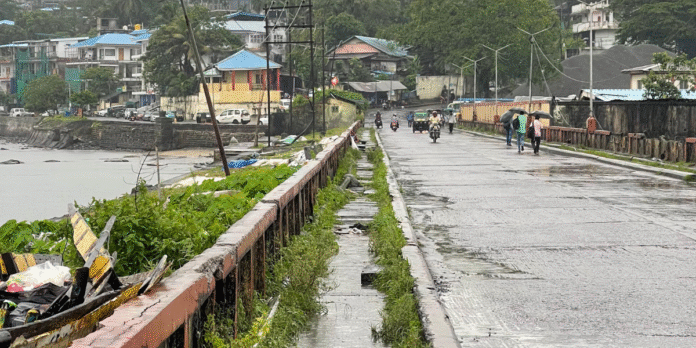Sri Vijaya Puram: The restriction on the movement of heavy-load trucks over the Chatham Bridge has triggered a chain reaction across the Andaman Islands’ critical supply systems. At the heart of the crisis is the Chatham jetty, once a vital berthing point for 4–5 ships transporting nearly 1,000 tonnes of construction materials daily, including sand, cement, and stone. Today, that jetty lies burdened with stranded cargo and no clear plan for its evacuation.
For years, Chatham has served as the logistical hub for the bulk movement of construction essentials. But with the bridge now off-limits to heavy vehicles due to structural concerns, the route has effectively been severed. The fallout is immediate: raw materials needed for everything from infrastructure projects to home-building are locked in limbo.
Alternative routes aren’t looking promising either. The Haddo jetty, primarily used for container cargo, lacks the infrastructure to absorb the weight of Chatham’s heavy-duty burden. Even diesel for the Chatham power house, previously transported across the bridge, now lacks a viable delivery path.
Officials have floated the idea of deploying extra vehicle ferries between Haddo and Phoenix Bay jetties to Chatham. However, these ferries are already working on a tight schedule, and introducing high-tonnage trucks would not only stress the system but also come with cost and logistical barriers. Any such stopgap, even if implemented, is likely to escalate transport costs, a burden that would be silently passed on to residents.
With monsoon rains adding further disruption to movement and infrastructure, businesses are left staring into a void. Many traders say they are unable to complete orders, while home builders are already recalculating budgets. Price spikes on essential construction materials are feared to follow, especially as ferry-based logistics add multiple layers of cost and delay.
The larger question being raised across the island is not just about a bridge, but about administrative foresight, or the lack of it. Locals point out that the signs of the Chatham Bridge’s deterioration were visible for months, if not years. Yet, the urgency to formulate a backup plan only emerged once the structure reached breaking point. Now, the public is paying the price, financially, physically, and mentally.
“We’re not just dealing with a logistics issue,” said a local businessman whose cement stock is now held up at the jetty. “We’re watching livelihoods being paused. Who pays for the time lost? Who makes up for the rise in construction costs?”
In the short term, the administration has not proposed a concrete workaround. Repair timelines for the bridge remain vague. Officials admit that any permanent fix will stretch over months, if not years. Meanwhile, the ripple effects continue to expand: delayed home construction, inflated prices, interrupted business cycles, and rising public frustration.
The sentiment on the ground is one of mounting anger, directed not at the bridge, but at the system that allowed it to become a choke point in the first place. “How long can we keep compensating for someone else’s delays?” asks a business waiting for materials to finish building. “Why must we pay for administrative lethargy?”
For now, Chatham remains cut off—its cargo still on the dock, its trucks without a route, and its people left picking up the pieces.





